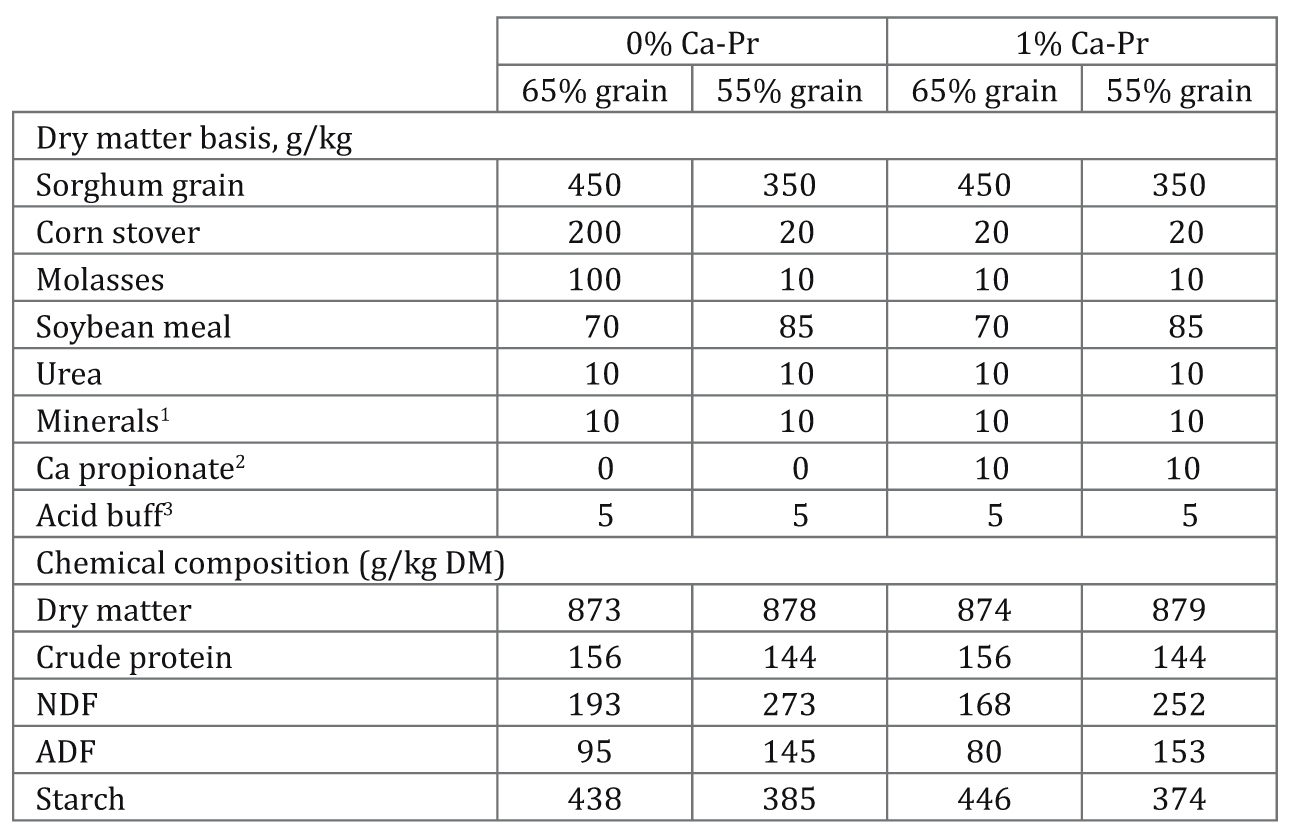Influence of calcium propionate on in vitro fermentation of sorghum-based diets
Keywords:
in vitro gas production, propionate, grain, fermentationAbstract
The objective of the present study was to evaluate the effect of calcium propionate (CaPr) on in vitro ruminal fermentation using a factorial arrangement 2 x 2 evaluating CaPr (0 vs. 1%) and grain level (55 vs. 65%). There was a CaPr x Grain interaction in the volume of gas produced (V; p = 0.04). Addition of CaPr prolonged Lag time (1.4 vs. 1.04 h; P<0.01), and increasing the grain level also prolonged Lag time (1.56 vs. 0.89 h; p < 0.03) and gas production rate (0.046 vs. 0.041 h-1; P<0.04). However, there were no differences in CH4, CO2, acetate, propionate and butyrate concentrations. Therefore, the addition of calcium propionate in a diet with 55 or 66% of grain increased Lag phase but it is not affected fermentation pattern or methane losses.

Downloads
Published
Issue
Section
License
Aquellos autores/as que tengan publicaciones con esta revista, aceptan las Políticas Editoriales.


